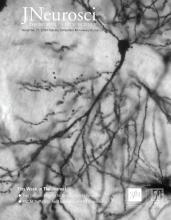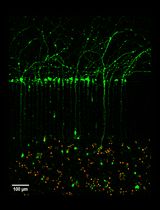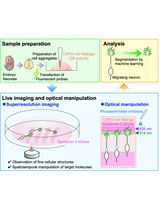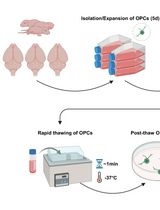- EN - English
- CN - 中文
Co-culture of Murine Neurons Using a Microfluidic Device for The Study of Tau Misfolding Propagation
利用微流体装置共培养小鼠神经元研究Tau的错误折叠传播
发布: 2020年08月20日第10卷第16期 DOI: 10.21769/BioProtoc.3718 浏览次数: 4840
评审: Max SchelskiSébastien GillotinAnonymous reviewer(s)
Abstract
The deposition of misfolded, aggregated tau protein is a hallmark of several neurodegenerative diseases, collectively termed “tauopathies”. Tau pathology spreads throughout the brain along connected pathways in a prion-like manner. The process of tau pathology propagation across circuits is a focus of intense research and has been investigated in vivo in human post-mortem brain and in mouse models of the diseases, in vitro in diverse cellular systems including primary neurons, and in cell free assays using purified recombinant tau protein. Here we describe a protocol that takes advantage of a minimalistic neuronal circuit arrayed within a microfluidic device to follow the propagation of tau misfolding from a presynaptic to a postsynaptic neuron. This assay allows high-resolution imaging as well as individual manipulation of the releasing and receiving neuron, and is therefore beneficial for investigating the propagation of tau and other misfolded proteins in vitro.
Keywords: Protein misfolding propagation (蛋白质错误折叠传播)Background
The propagation of misfolded protein throughout the brain underlies the spread of pathology in several neurodegenerative disorders, including Alzheimer’s disease, Parkinson’s and Prion disease (Goedert et al., 2010; Davis et al., 2018; Hallinan et al., 2019a). Understanding the underlying mechanisms may help limit disease progression and is therefore an area of intense research. Several in vivo and in vitro assays exist that monitor this process, including mouse models that develop neurodegeneration in response to overexpressing mutant human tau (Allen et al., 2002; Ramsden et al., 2005; SantaCruz et al., 2005; Gibbons et al., 2017). In vitro models include cell lines expressing biosensors that monitor aggregation (Kfoury et al., 2012; Holmes et al., 2014) and primary neuronal cultures, including those in microfluidic devices (Wu et al., 2013 and 2016, Takeda et al., 2015). In this protocol we describe in detail an in vitro assay to monitor the seeding and propagation of tau misfolding across connected neurons. This protocol builds on previously established assays, as described above, but additionally allows to monitor not just the passage of misfolded tau from one neuron to the next, but also the seeding in the previously unaffected cell, thus fully recapitulating inter-neuronal propagation. The microfluidic setup further allows individual manipulation of the pre- and postsynaptic cell, and high resolution live and fixed cell imaging of both connected neurons. This assay can be adapted for the study of the spread of other proteinopathies, such as prion or α-synuclein pathology. In addition, the basic directionalised and connected setup allows the culture of a range of different neuronal subtypes and thus the study of various other trafficking- and spread-related neurotoxic agents, including that of viruses and environmental insults such as nanoparticle toxicity.
Materials and Reagents
- Microfluidic device preparation
- Microfluidic devices
Note: Microfluidic devices are commercially available from Xona Microfluidics, or can be manufactured as previously described in Taylor et al., 2005 and Holloway et al., 2019. For unidirectional outgrowth we recommend using the “arrow” devices described in Holloway et al., 2019. - 22 x 50 mm rectangle coverslips (0.16-0.19 mm thickness, Smith Scientific, catalog number: NPS16/2250 )
- 94/16MM Petri dishes, non-vented (Greiner Bio-one, catalog number : 632180 )
- 3 M Scotch-tape
- poly-D-Lysine hydrobromide (PDL, Sigma, catalog number: P7886 )
- Sterile ddH2O
- 70% Ethanol (EtOH)
- Neurobasal medium (Gibco, catalog number: 21103-049 )
- Microfluidic devices
- Primary neuron culture and transfection
- 15 ml Falcon Conical Tubes 17/120MM (Cellstar, catalog number: 188271 )
- 50 ml Falcon Conical Tube 30/115 (Cellstar, catalog number: 227261 )
- 40 µm sterile cell strainer (Fisher Scientific, catalog number: 15360801 )
- Timed-pregnant female mouse, E15-E18
Note: We routinely use C57Bl/6 mice. - Glutamax supplement (Gibco, catalog number: 35050-038 )
- Neurobasal Media (NBM) (Gibco, catalog number: 21103-049 )
- Fetal Bovine Serum (FBS) (Gibco, catalog number: 10270-106 )
- Dulbecco’s Modified Eagle Medium (DMEM) (Gibco, catalog number: 41965-039 )
- Opti-MEM reduced serum medium with glutamax supplement (Gibco, catalog number: 51985-026 )
- DNase (Sigma, catalog number: DN25 ; optional)
- B27 Media Supplement, 50x (Gibco, catalog number: 17504-044 )
- Lipofectamine2000 (Gibco, catalog number: 1168027 )
- 0.5% Trypsin-EDTA (Gibco, catalog number: 15400-054 )
- Phosphate Buffered Saline (DPBS), no Calcium (Ca2+) and Magnesium (Mg2+) (Gibco, catalog number: 14190-094 )
- PDL solution (see Recipes)
- Culture medium (complete NBM) (see Recipes)
- DNase solution (see Recipes)
- Fixation and imaging
Software
- FIJI (https://fiji.sc) or ImageJ (NIH, https://imagej.nih.gov/ij/, version 1.51 was used)
- Matlab (MathWorks, version R2017a was used)
- SoftWoRks software v6 (or suitable image acquisition software for the microscope to be used)
- Excel (or any spreadsheet) to collect data prior to analysis.
Equipment
- Dumont forceps #5, 11 cm, straight (Fine Science Tools, catalog number: 11254-20 )
- Dumont #5/45 forceps, 11 cm, 45 Degree Angle (Fine Science Tools, catalog number: 11251-35 )
- Scissors
- Incubator
- Laminar flow hood
- Dissection microscope
- Hemocytometer (Fisher, catalog number: 11704939 )
- Autoclave
- Tissue culture hood
- 4 °C refrigerator
- -20 °C freezer
- 37 °C water bath
- Cell culture incubator set at 37 °C, 5% CO2
- Orbital shaker (Fisher, catalog number: 10759145 )
- DeltaVision Elite microscope
Note: Alternatively, any inverted high-resolution fluorescent microscope can be used.
Procedure
文章信息
版权信息
© 2020 The Authors; exclusive licensee Bio-protocol LLC.
如何引用
Readers should cite both the Bio-protocol article and the original research article where this protocol was used:
- Hallinan, G. I., Lopez, D. M., Vargas-Caballero, M., West, J. and Deinhardt, K. (2020). Co-culture of Murine Neurons Using a Microfluidic Device for The Study of Tau Misfolding Propagation. Bio-protocol 10(16): e3718. DOI: 10.21769/BioProtoc.3718.
- Hallinan, G. I., Vargas-Caballero, M., West, J. and Deinhardt, K. (2019b). Tau misfolding efficiently propagates between individual intact hippocampal neurons. J Neurosci 39(48): 9623-9632.
分类
神经科学 > 神经系统疾病 > 细胞机制
神经科学 > 细胞机理 > 细胞分离和培养
细胞生物学 > 细胞分离和培养 > 微流体细胞培养
您对这篇实验方法有问题吗?
在此处发布您的问题,我们将邀请本文作者来回答。同时,我们会将您的问题发布到Bio-protocol Exchange,以便寻求社区成员的帮助。
Share
Bluesky
X
Copy link













